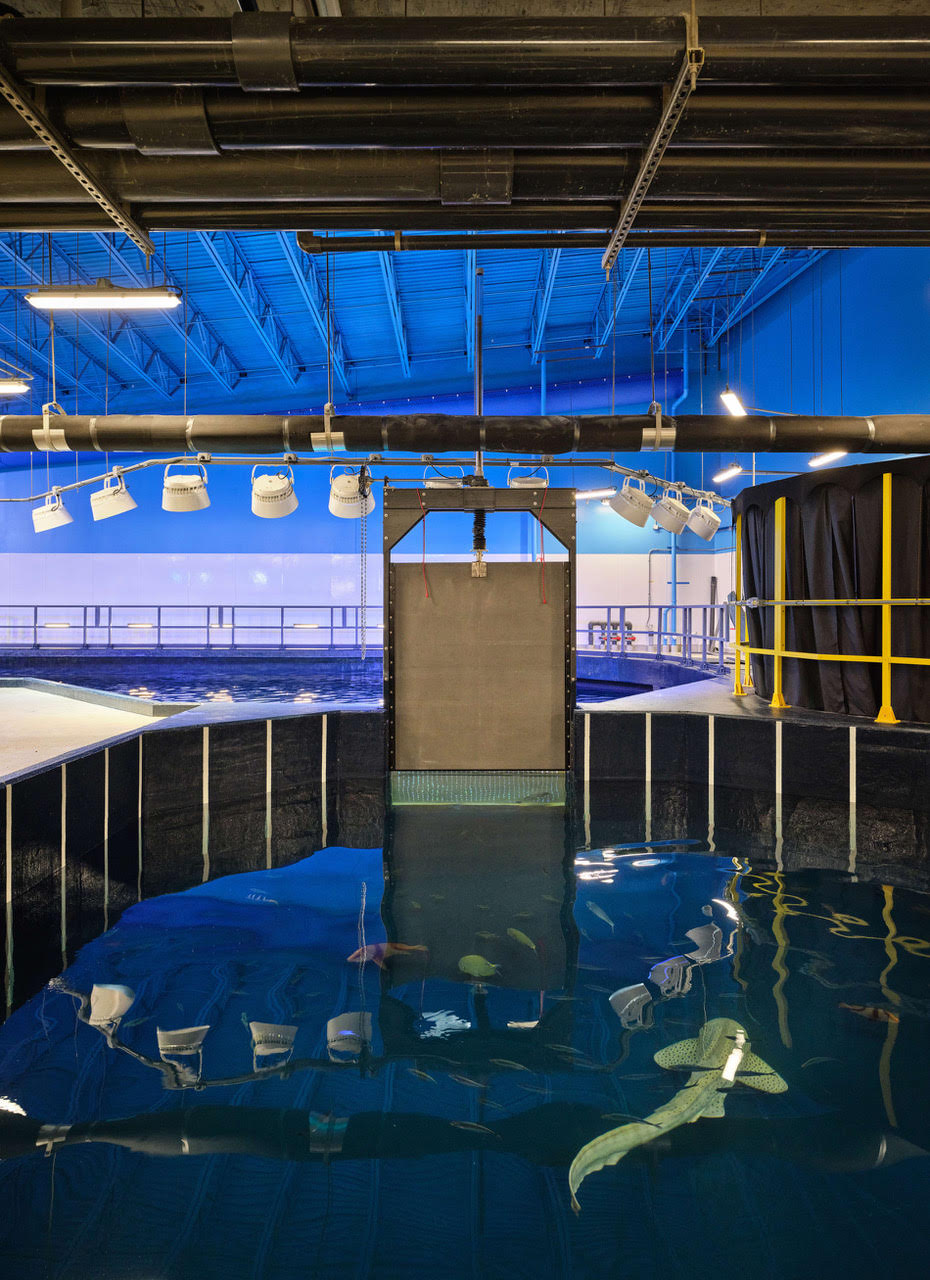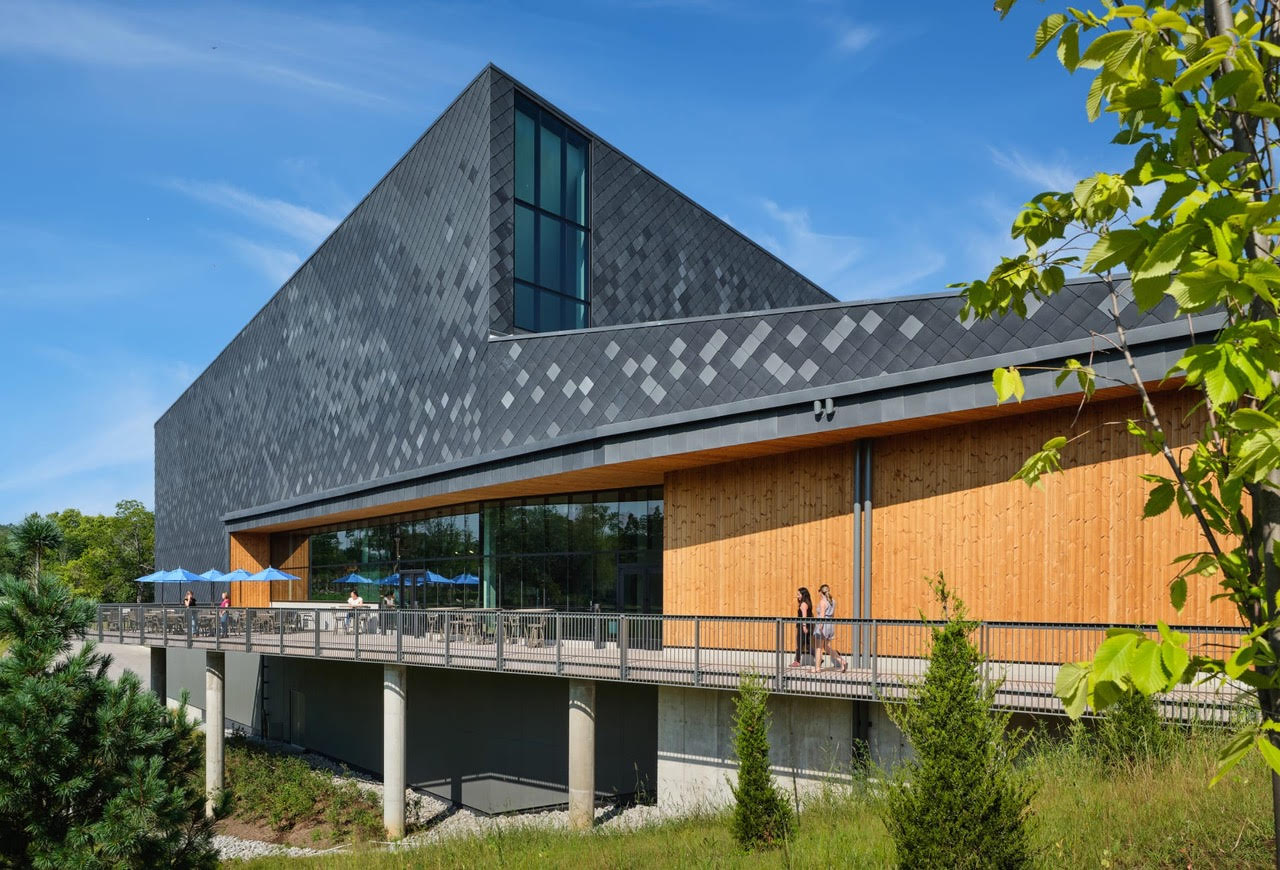Kansas City’s new Sobela Ocean Aquarium is a world-class facility home to nearly 8,000 animals in 34 habitats ranging from small tanks to a giant 400,000-gallon shark tank.
The 65,000-sf facility takes visitors from a shallow tropical shore, following a “warm current into the melting pot of the deep ocean, and is carried via a cold current from the depths, through the ocean’s forests, emerging at a cool Pacific coast,” according to a news release.
Exhibit designs by Spacehaus integrate with architectural cues such as changing light quality, spatial variation, and physical descent. The experience augments unique exhibit designs “to engage visitor’s emotions, spark their curiosity, and build in them a passion for the ocean.”
“This project creates that opportunity for all, introducing visitors to our global ocean by using the concept of marine currents as an interpretive framework,” according to lead architect EHDD.
“Despite holding nearly 650,000 gallons of water in total, the aquarium has obtained a LEED silver certification,” says David Dowell, AIA, principal of El Dorado who led the support architecture team. “Some of the sustainability goals include capturing stormwater on site, significantly reducing water and energy use, and maximizing natural light while also bird-safing the structure through fritted glass.”
The aquarium is the first project in the Kansas City area to use CarbonCure technology, which introduces captured CO₂ into fresh concrete to reduce its carbon footprint by 22%.
The aquarium is now the largest building on the zoo campus. It opens to the zoo’s main pedestrian promenade with an image that is welcoming in scale, and warm in materiality. Located in Swope Park in Kansas City, Mo., the Kansas City Zoo & Aquarium, founded in 1909, spans 202 acres and receives about one million visitors per year.
Owner and/or developer: Sobela Ocean Aquarium at the Kansas City Zoo and Aquarium
Design architect: EHDD and El Dorado
MEP engineer: Antella
Structural engineer: Leigh & O'Kane
General contractor/construction manager: JE Dunn


Related Stories
| Mar 7, 2014
Chicago's 7 most threatened buildings: Guyon Hotel, Jeffrey Theater make the list
The 2014 edition of Preservation Chicago's annual Chicago's 7 list includes an L station house, public school, theater, manufacturing district, power house, and hotel.
| Mar 5, 2014
5 tile design trends for 2014
Beveled, geometric, and high-tech patterns are among the hot ceramic tile trends, say tile design experts.
| Mar 4, 2014
First look: Historic grain silo to become soaring art gallery
British architect Thomas Heatherwick has proposed to repurpose a grain silo into an art gallery in Cape Town, South Africa. The silo is made up of 42-concrete tubes, which Heatherwick plans to make into gallery spaces.
| Feb 28, 2014
Six finalists selected in design competition for Canadian Holocaust monument
David Adjaye and Daniel Libeskind are among the finalists for the National Holocaust Monument, planned near the Canadian War Museum in Ottawa.
| Feb 24, 2014
New Menil Drawing Institute will fit in with leafy surroundings
In Houston, plans are being finalized for the first freestanding American building built to house and conserve modern and contemporary drawings.
| Jan 30, 2014
How reverse engineering nature can spur design innovation
It’s not enough to copy nature. Today’s designers need a deeper understanding of environmental nuance, from the biome in.
| Jan 28, 2014
16 awe-inspiring interior designs from around the world [slideshow]
The International Interior Design Association released the winners of its 4th Annual Global Excellence Awards. Here's a recap of the winning projects.
| Jan 27, 2014
A climber's dream: Rock climbing hall planned near Iran's highest peak
Forget the rock climbing wall. A developer in Iran is building a rock climbing hall. That's right, an entire building dedicated to the sport, with more than 48,000 sf of program space.
| Jan 17, 2014
Crystal Bridges Museum will move Frank Lloyd Wright house from New Jersey to Arkansas
Numerous architectural experts have concluded that moving the Bachman Wilson House offers its best hope for long-term survival.
| Jan 13, 2014
Custom exterior fabricator A. Zahner unveils free façade design software for architects
The web-based tool uses the company's factory floor like "a massive rapid prototype machine,” allowing designers to manipulate designs on the fly based on cost and other factors, according to CEO/President Bill Zahner.

















